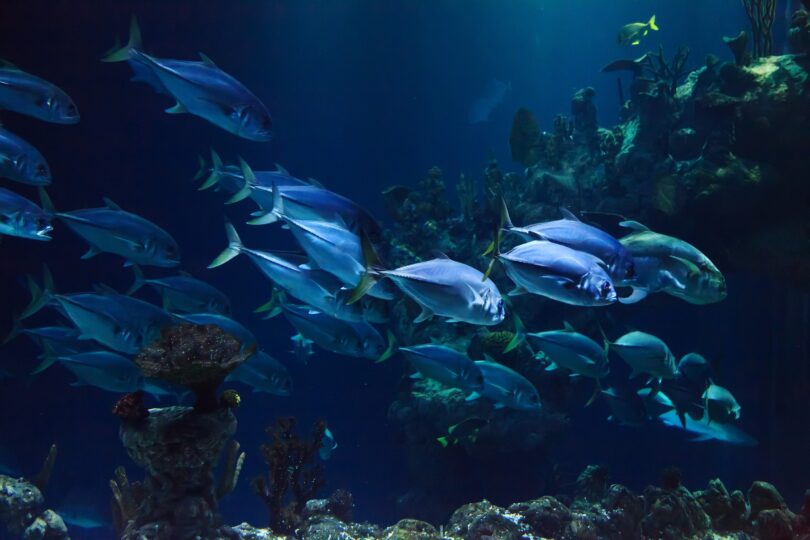Introduction:
Beneath the vast expanse of the ocean lies a world largely uncharted and unexplored, filled with wonders that have captured the imagination of scientists and adventurers alike for centuries. The deep sea, with its extreme pressures, frigid temperatures, and perpetual darkness, presents one of the most challenging environments for exploration on our planet. Yet, despite these formidable obstacles, researchers have made remarkable strides in uncovering the secrets of this enigmatic realm.
The Abyssal Depths: A World Apart
The deep sea comprises the vast expanses of ocean floor beyond the reach of sunlight, beginning at around 200 meters (656 feet) and extending to the deepest trenches, which plummet over 10,000 meters (32,800 feet) below the surface. In these lightless depths, life has evolved to thrive under conditions that would be inhospitable to most organisms. The creatures that inhabit these depths are uniquely adapted to their extreme environment, exhibiting fascinating adaptations that allow them to survive and even flourish in this challenging realm.
Discoveries in the Darkness
Exploration of the deep sea has revealed a stunning array of life forms, from bizarre, alien-like creatures to delicate, otherworldly ecosystems. One of the most remarkable discoveries in recent years has been the existence of hydrothermal vents, deep-sea hot springs that support thriving communities of organisms in the absence of sunlight. These ecosystems, fueled by chemical energy rather than sunlight, host an astonishing diversity of life, including giant tube worms, ghostly white crabs, and peculiar species found nowhere else on Earth.
In addition to hydrothermal vents, the deep sea is also home to a diverse array of other habitats, including cold seeps, underwater mountains known as seamounts, and vast plains of abyssal mud. Each of these environments supports its own unique communities of organisms, adapted to the specific challenges and resources available in their surroundings.
Unraveling the Mysteries of the Deep
Despite decades of exploration, much of the deep sea remains largely unexplored and poorly understood. The extreme depths, high pressures, and darkness present formidable challenges to researchers seeking to study this hidden world. However, advances in technology have revolutionized our ability to explore the deep sea, allowing scientists to peer into its depths with unprecedented clarity and precision.
Remotely operated vehicles (ROVs) equipped with cameras and sampling devices have enabled scientists to explore deep-sea ecosystems with remarkable detail, capturing images and footage of previously unseen creatures and habitats. Autonomous underwater vehicles (AUVs) have likewise expanded our reach into the abyss, mapping the seafloor and collecting data on oceanic processes with unparalleled accuracy.
Conservation Challenges and Opportunities
As our understanding of the deep sea grows, so too does awareness of the threats facing this fragile ecosystem. Human activities such as deep-sea mining, bottom trawling, and pollution pose significant risks to deep-sea ecosystems, potentially causing irreparable harm to these unique and poorly understood habitats. Protecting the deep sea will require international cooperation, innovative conservation strategies, and a commitment to sustainable use of marine resources.
Fortunately, there is cause for hope. Increasing public awareness of the importance of the deep sea, combined with advances in marine conservation science and policy, offers opportunities to safeguard these vital ecosystems for future generations. Marine protected areas, regulations on deep-sea mining, and sustainable fishing practices are just a few of the tools that can help preserve the biodiversity and ecological integrity of the deep sea.
Extremes of the Deep
The deep sea is a realm of extremes, characterized by crushing pressures, icy temperatures, and perpetual darkness. At depths below 1,000 meters (3,280 feet), the pressure can exceed 100 times that at the surface, creating conditions that would crush most organisms. Yet, despite these harsh conditions, life flourishes in the deep sea, with a remarkable diversity of species adapted to thrive in this challenging environment.
One of the most striking features of the deep sea is its profound darkness. With sunlight unable to penetrate beyond the upper layers of the ocean, organisms in the deep sea have evolved to rely on alternative sources of energy, such as bioluminescence, chemosynthesis, and detritus raining down from the surface.
Unraveling the Depths
Exploring the deep sea presents unique challenges, requiring specialized equipment and expertise. Submersibles, manned and unmanned, allow researchers to descend into the abyss, collecting samples, conducting experiments, and documenting life at depths previously inaccessible. These expeditions have revealed a wealth of new species, including bizarre creatures with adaptations found nowhere else on Earth.
Recent advances in DNA sequencing have further revolutionized our understanding of deep-sea life, allowing scientists to uncover the genetic diversity of organisms living in this remote environment. By studying the genomes of deep-sea species, researchers can unravel evolutionary relationships, uncover adaptations to extreme conditions, and gain insights into the processes driving diversity in the deep sea.
Discoveries and Dangers
Among the most remarkable discoveries in the deep sea are hydrothermal vents and cold seeps, where hot fluids and gases spew from the ocean floor, creating oases of life in the darkness. These ecosystems support complex communities of organisms, including bacteria, archaea, worms, and crustaceans, adapted to thrive in the absence of sunlight.
However, the deep sea is not immune to the impacts of human activities. Pollution, overfishing, climate change, and deep-sea mining pose significant threats to the health and stability of deep-sea ecosystems. As human activities encroach ever deeper into the ocean, it is crucial that we develop sustainable management strategies to protect these fragile environments for future generations.
The Future of Deep-Sea Exploration
Despite the challenges and dangers, the allure of the deep sea continues to draw researchers and explorers from around the world. With advances in technology and increasing international collaboration, we are poised to unlock even greater insights into the mysteries of the deep. From probing the depths of Earth’s oceans to searching for life on distant moons and planets, the exploration of the deep sea offers boundless opportunities for discovery and understanding. As we venture further into the abyss, we are certain to encounter wonders beyond imagination, reminding us of the vastness and complexity of our planet and the universe beyond.
The Final Frontier
As we continue to explore the depths of the ocean, we are confronted with the awe-inspiring beauty and complexity of the deep sea, a realm that holds untold mysteries and surprises waiting to be discovered. With each new expedition, each new discovery, we come one step closer to unraveling the secrets of this last frontier on Earth. As we delve deeper into the abyss, we gain not only a greater understanding of our planet’s past and present but also insight into the future of life on Earth.








